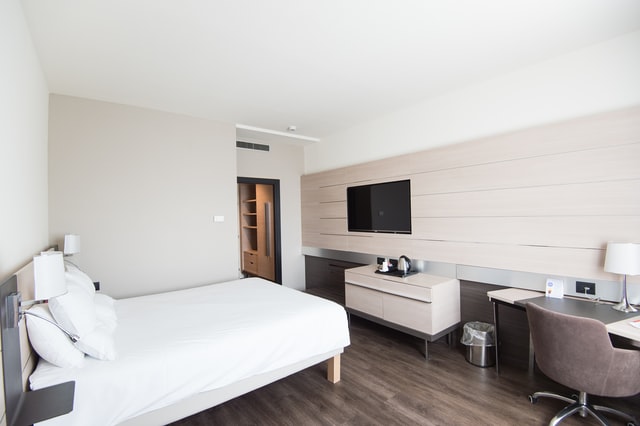The Challenges Facing Today’s Furniture manufacturers
In the past, it was easy to purchase furniture. You went to a store and decided which item you wanted, and purchased it. Today, however, there are many more choices available for consumers as well as increased competition among businesses. In addition, the cost of manufacturing average quality furniture has gone up because of commodities prices rising and increased transportation costs due to the price of oil reaching records heights. These factors have changed how companies go about their business to remain competitive and profitable. Below is a list of top challenges facing today’s manufacturers:
Increased competition from retailers
As mentioned before, there is an increased amount of choice available for consumers when purchasing furniture items. This means retailers have to offer better quality and/or cheaper products to appeal to the consumer. Companies such as Ikea, Crate & Barrel, and Pottery Barn have become very popular for their reasonably priced furniture.
Commodities prices
Because companies in this industry typically buy large quantities of material at once, when the price of a commodity rises, it has a ripple effect on the whole bottom line within the company. For example, if the price of metal rises 10%, all of its costs will rise by about 9%. This is because they usually pay on average 90% of total costs upfront (materials + labor), and then they make payments over time to cover other expenses such as energy usage or transportation. The cost for both has increased significantly in recent years.
Transportation
Many furniture companies are using air freight to ship their products. This has become very expensive over the last few years and can create timing and quality control issues. Companies must now ensure that their goods arrive at stores when they are supposed to or risk losing money or sales from customers who do not want items that have been damaged during shipping. Many companies decide to ship products soon after they are made instead of storing them until a large amount is built up, which helps reduce storage costs and increases labor costs for putting together individual items and packing them for shipment. On the other hand, ocean ships cost less than airships because transportation by sea is cheaper than by air freight, around $2,500 per container vs. $7,000 per container. However, the time it takes for a ship to arrive is much longer than by air because ships have to stop at many ports along the way and can sometimes get delayed due to bad weather conditions or technical problems with equipment on board.
Shortage of materials
Often, suppliers do not have enough material in stock to sell directly to manufacturers, which means that they must wait until more is produced before they can fulfill orders from their customers. Smaller companies are usually forced either to take what they can get or pay higher prices for smaller quantities when trying to buy direct from primary suppliers (as opposed to going through middlemen). Because larger companies often buy from many suppliers, their order does not have the same priority as smaller companies in terms of fulfilling delivery on time.
Long lead times
Another factor that causes large backlogs is long lead times for manufacturing facilities to finish products because they are backed up with other orders. This can be a problem for manufacturers during peak seasons when supplies may run low, and customers are forced to wait a longer period of time before receiving their product.
Customer demands
Customers are demanding higher quality and more customization options than ever before, which means that companies need to invest in better machinery and better-trained workers so that they stay ahead in innovation and productivity. New technologies such as CNC machining allows businesses to mass produce unique pieces without sacrificing quality. Companies must also invest more money in marketing and advertising to keep up with competitors.
Overcapacity
Overcapacity is a bigger issue for larger companies who want to grow their market share but cannot sell as many products because many other businesses are already producing similar items. The result is that they lose money when selling products which reduces the amount of capital available for investing in new machines and technology. Smaller companies may experience overcapacity; however, this problem can be easily solved by moving production closer or getting involved in a joint venture with other manufacturers to share overhead costs (i.e., rent).
Growing wages
In recent years, furniture workers have been demanding higher wages from employers because they are barely making enough to support their families. Employers who want to attract workers and retain loyal talent know that they must keep wages competitive between competitors or lose employees to other companies. Many such employers have no choice but to raise salaries for all of their workers, which decreases the amount of profit that can be made on each product unit sold.
Lack of funding
Many businesses face difficulties acquiring capital because banks are not lending as much money as before, and larger companies find it difficult to compete with foreign imports that require local partners to market & sell products in that region (i.e., South East Asia). Local entrepreneurs looking for financing from banks often have difficulty obtaining loans if they cannot supply a list of customers willing to buy products at the time of application.
Lack of skilled labor
Many small business owners may not have a consistent workflow because they do not have enough employees or lack highly skilled workers who can efficiently manage a production line. For factory owners, it is hard to find qualified candidates for managerial positions because there are so few educational institutions offering degrees in industrial design and manufacturing sciences. Parents in developing countries prefer that their children study to become doctors, lawyers, or engineers, which means that most people going into technical trades end up having only a high school diploma, whereas larger companies require higher degrees for most positions (i.e., Masters Degree). Smaller employers also face difficulty finding quality laborers because many young adults are inclined more towards getting an education rather than training for a specific trade.
Since the furniture industry is so diverse, many manufacturers face different problems depending on their size and location. However, the most pressing challenges above seem to be shared by all companies regardless if they are small or large, local or multinational. Business owners must keep in mind that it may take longer than expected to attain success because of these obstacles, but triumph will come with hard work and perseverance.


